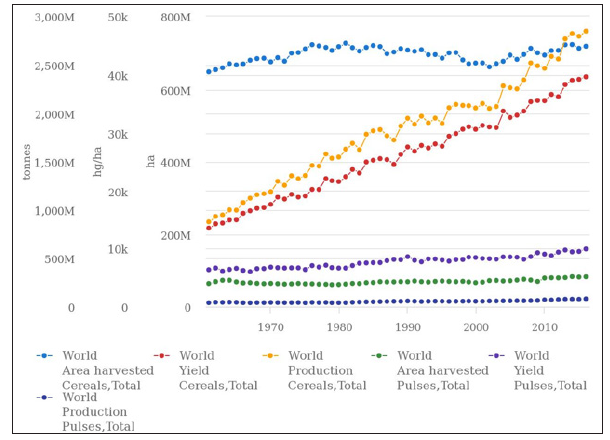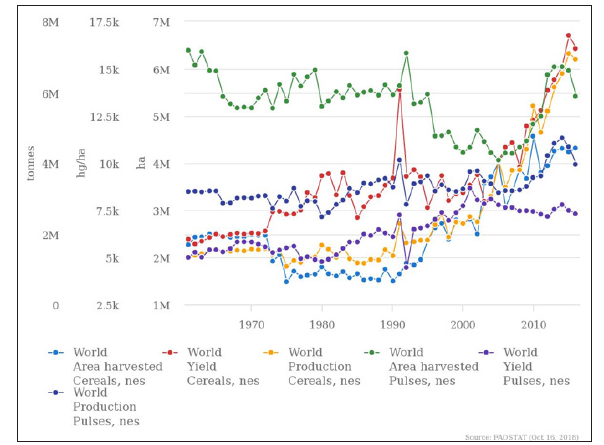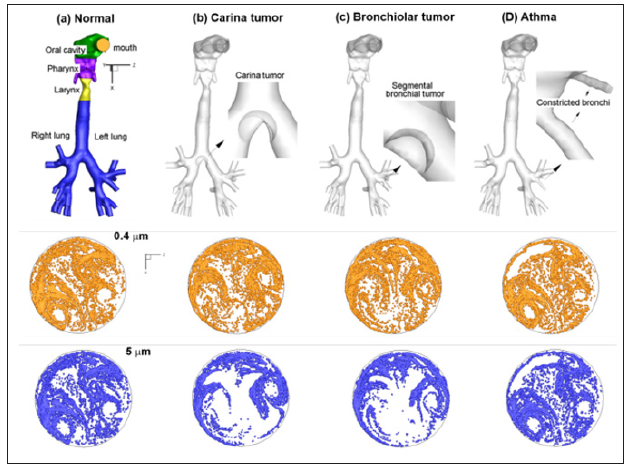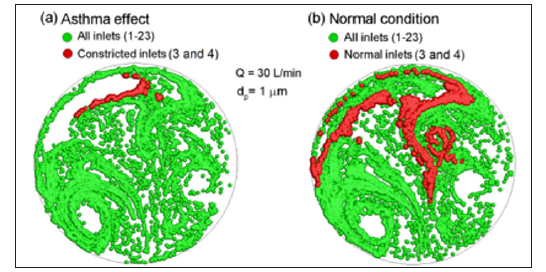Study of Prevalence and Associated Risk Factors of Bovine Fasciolosis in and Around Ambo District Abattoir and Field Survey Western Ethiopia
Introduction
Ethiopia has the largest livestock population in Africa, with a total cattle population of 57.83 million [1]. In spite of the presence of huge ruminant population, Ethiopia fails to optimally exploit resources due to a number of factors such as diseases, poor nutrition, poor husbandry practices and lack of government policies for disease prevention and control [2]. Among the animal diseases that hinder the animal health are parasitic infections that have great economic impact [3]. Among many parasitic problems of farm animals, fasciolosis is a major disease which imposes economic impact on livestock production particularly of cattle and sheep [4]. Fasciola hepatica and Fasciola gigantic are the two liver flukes commonly reported to cause fasciolosis in cattle. The life cycles of these parasites require snail as an intermediate host [5]. Fasciola hepatica has a worldwide distribution but predominates in temperate zones while F. gigantic is found on most continents, primarily in tropical regions [6]. The presence of fasciolosis due to F. hepatica and F. gigantica in Ethiopia has long been known and its prevalence and economic significance has been reported by several workers [7]. However, few attempts have been made to study the epidemiology of this parasitic problem in various parts of the country with the specific aim of determining the parasitic burdens, especially in relation to months of the year, rainfall, temperature, humidity, altitude and other related factors. This information is very important in planning control programs and also estimating the economic burden to the country as the result of this parasite [8]. These Losses from parasitic diseases including fasciolosis expected to be high in tropical countries like Ethiopia where strategic and most effective disease control programs are lacking. Therefore, a study on the prevalence and associated risk factors of the disease is crucial before planning and instituting a control program [9]. Several studies have reported the presence and economic significance of fasciolosis in Ethiopia.
The prevalence of the disease is known to be relatively high causing considerable economic losses in livestock production [10]. The areas around Ambo and peasant association areas are generally considered as one of the most affected and endemic area of fasciolosis in the country region, Veterinary practitioners and animals owners complain of huge annual losses from it. However, there are practically no dependable detailed studies that have been conducted on the prevalence the monthly/seasonal variations in the prevalence rates of the disease and other related parameters so as to design relevant control strategies that can be implemented against the disease in the area. The information regarding the prevalence and associated risk factors of bovine fasciolosis in Ambo area is scanty. Therefore, the aim of this study is to determine the prevalence and associated risk factors of trematode infections, identify the fluke burden and species identification in particular positive livers, and determination of the liver pathology (Lesion) in cattle owned by smallholder farmers located in and around Ambo area, Western Ethiopia.
Materials and Methods
Description of the Study Area
The study was conducted from November 2015 to November 2016 in and around Ambo peasant association. Ambo is located about 115km West of Addis Ababa. It is found at the longitude of 37032’ to 3803’E, at latitude of 8047’ to 9020’N and average altitude of 1900 meters to 2275 above sea level. Ambo has a climatic condition of 23% highland, 60% mid latitude and 17% low land. It has annual rainfall and temperature ranging from 800mm- 1000mm and 200c to 290c respectively. The rain is bimodal with the short rainy season (February to May) and long rainy season from June to September.
Study Animals and Sampling Technique
Study population comprises of indigenous (local) breed of animals of different age, sex, body conditions and origin category found under the extensive grazing system. All Sampled cattle from the selected six peasant association in and around Ambo areas were recorded. In the abattoir study 258 male indigenous animals provided for slaughter from different localities in the West Shoa part of Ethiopia. Simple random sampling technique was the sampling strategy used to collect all the necessary data from fecal samples and abattoir survey of the study animals.
Sample Size Determination
Since there was no previous study in Ambo and around peasant association to establish the prevalence, associated risk factors, fluke burden and species identification in of bovine fasciolosis, the sample size was determined by taking the prevalence of 50% and 5% absolute precision fasciolosis using the formula given by [11]. Accordingly, 384 animals were supposed to be sampled but in order to increase the precession a total of 642 sample size were used. It was also considered both sexes and age. Age was classified as young (< 4 years) and adult (>4years) [12].
Study Design
A cross-sectional investigation of the prevalence of bovine fasciolosis in the six peasant association in and around Ambo was carried out from November 2015 to November 2016.
Corpological Examination
Fecal samples were collected directly from the rectum of each animal and placed in universals bottles and transported to Ambo University collage of parasitological laboratory by preserving with 10% formalin. Sedimentation technique was used to detect the presence or absence of fluke eggs in the fecal sample collected according to [13]. Two grams of faeces was added to 42ml of water in a graduated cylinder. The contents were then mixed thoroughly using a glass rod, and were poured through a tea strainer to remove large debris. The solution was then further passed through a sieve (mesh aperture 210mm) into a conical flask and water was run through the sieve to ensure no eggs remained attached to the sieve. The filtrate was then allowed to sediment for 3 min after which the supernatant was siphoned off taking care not to disturb the precipitated matters. The latter was stained with two drops of methylene blue and the entire sediment placed on slide covered with a cover slip and viewed under a compound microscope (Labomed). Eggs of Fasciola species were identified by their characteristic morphology and colour. To differentiate between eggs of Paramphistomum species and Fasciola species, a drop of methylene blue solution was added to the sediment where eggs of Fasciola species show yellowish colour while eggs of Paramphistomum species stain by methylene blue [14]. Samples that were not processed within 24 hours were stored in a refrigerator at 4°C.
Abattoir Study
Active abattoir survey was conducted based on cross sectional study during routine meat inspection on randomly selected cattle slaughtered at Ambo municipal abattoir. A total of 258 cattle was examined during this study. During ante-mortem examination detail records about the age, sexes, origins and body conditions of the animals were performed. During post-mortem inspection, each liver visually inspected, palpated and incised based on routine meat inspection by [15]. All livers having Fasciola species condemned were registered and flukes were conducted for species identification as described by [16]. Hepatic lesions in Fasciola positive livers were further grouped into lightly, moderately and severe affected base on the severity of damage inflicted by the parasite. The task of categorization was performed based on the criteria forwarded by [17].
Body Condition Scoring
Body condition of the study animals was scored based on the criteria set by [18], which ranged from 0 to 5. Body condition score 0 stands for cows with the poorest body condition while score 5 for cows with the best condition. All cattle under the study their body condition grouped into three groups poor (score 0-1), medium (score 2-3) and good (score 4-5).
Statistical Analysis
The recorded data were entered in to Microsoft excel data base system to be analyzed using SPSS version 20 statistical software. Descriptive statistics was computed. Pearson’s chi square (x2) was used to evaluate the association between the prevalence of fasciolosis and different factors. A 95% confidence interval and P-value less than 0.05 (at 5% level of significance) were considered significant in all analysis.
Results
Coprological Examination
From a total of 384 fecal samples examined from cattle during the study period, 150 (39.06%) samples were found positive for fasciolosis. Infection rate of fasciolosis in poor body condition group was higher than the animals with good body conditions group. However, there was no statistically significant variation among body condition group (x2 = 1.1154; P>0.05). As to the prevalence rates on sex basis, infection rates of 36% and 42% in female and male respectively were observed. Statistical analysis of this result shows no significant variation in infection rate between sex (x2 = 1.1154; P>0.05). When prevalence rate among age groups is considered analysis of data indicates that 42% and 37% in Adult and young respectively. It has statistically significant when get analyzed statistically between age group (x2 = 54.1337; P < 0.05) (Table 1). The severity of egg infestation in three categories in positive animals’ light infestation, medium infestation and severe infestation depending on the number of eggs per gram of faces identified during fecal examination. Out of positive samples 11 samples are severely infested, means EPG level> 1000, 84 samples indicate medium infestation EPG Level> 600-1000, and light infestation 55 samples having EPG level 1-600 (Table 2). From counted eggs the maximum egg count is 1200 and the minimum egg count is 100 with the mean of 486 from the all positive sample EPG count (Table 3).
Prevalence Survey Results: This result revealed that out of 258 slaughtered animals 101 animal’s liver found infected with adult Fasciola hepatica. Classification of liver pathological lesions out of 101 infected livers, 9(9%) were lightly affected, 36(35.6%) moderately affected, and 56 (55.4%) severely affected (Table 4).
Fluke Burden Determination and Species Identification:
Fluke count made on 101 livers taken from each of the three pathological categories light, moderate and severely affected liver revealed that the overall fluke mean is 40 per affected liver, maximum number of fluke 91 and minimum number fluke 8 from the total 101 livers positive for liver fluke parasites (Tables 4 & 6). Out of 258 total sample, F. hepatica is dominant no F. gigantica and mixed infection were found (Table 5).
Discussion
Prevalence rate of 39% in bovine fasciolosis was found in fecal examination in and around Ambo peasant association. This result was in line with [17] and [19], who reported that 32% and 32.6% prevalence of bovine fasciolosis in Adwa municipal Abattoir, North Ethiopia, and Guduru and Abay Chomaan districts, respectively. This result was also similar with report of [20] with 30.02% prevalence around Dangila; [21] 33.42% in North Gonder, [22] 36.72% in and around Bahir Dar, [23] (42.25%) around Assela and [24] 41.41% in and around woreta, Northwestern Ethiopia. On the other hand, the prevalence of bovine fasciolosis reported in current study is higher than the values reported by [25] 19.1% in Zenzelma; [26] 12.4% in Kombolcha; [27] Negesse et al. with 15.9% at Wolega zone 9.1% in Kombolcha town; 15.9% prevalence by [28] at Nekemte veterinary clinic; [29] at Welaita Sodo (12.7% and by [30] Hawi, Tanzania (14.05%). This variation in prevalence of bovine fasciolosis might be due to differences in environmental factors, management system and level of veterinary service. There was statistically significant association among age of the animal and prevalence of fasciolosis (P< 0.05). Similarly, several studies in Ethiopia [31,32,24,5] reported age as one of the important risk factors influencing bovine fasciolosis in cattle. The increased resistance (low prevalence) as age increases is most likely related to the high level of tissue reaction seen in bovine livers, severe fibrosis which impairs the passage of immature flukes, acquired resistance. Stenosis and calcification of bile duct assumed unfavorable site for adult parasites and consequently fast their expulsion [33].
The study showed that there was no significant variation among sex of animals which the same with reported of [11], [34] and [35]. This may be due to management system is similar for both sexes that means they have equal exposures for contaminated grass and in this study area the management and treatment is the same for all animals. Prevalence of bovine fasciolosis was not statistically association with body condition of animals. This result was similar with reports of [35] and it was different from [36] and [37]. The highest prevalence of bovine fasciolosis was recorded in poor body condition animals. This could be due to differences in their resistance for concurrent infection and also fasciolosis itself. Concurrent infection and chronic disease on animals with poor body condition may result the animals to be susceptible for fasciolosis. This shows fasciolosis causing weight loss and is the characteristic sign of the disease. Chronic fasciolosis commonest form of the disease in cattle and one of the sign is weight loss (emaciation) [32]. The prevalence rate of faciolosis observed in the Abattoir survey (39%) and the prevalence rate observed in the coprological examination is much similar. This is because of the fact that most of the animal slaughtered in the Ambo municipal slaughter house came from Ambo and its surrounding woredas, which has the same ecology, climatic and geographical location and the animal slaughtered (slaughtering) in the Ambo Abattoir use the same type of veterinary service (treatment) with that of animal in other parts of Ambo area.
From animals found positive for Fasciola, the egg burden or quantitative examination indicate out of examined animal faces the EPG level lay in moderate infestation (>600-100 EPG) is 84 Fecal sample out of 150 positive samples, 55 samples light egg infestation and 11 sample were severe infestation with Fasciola eggs (>2000 EPG) is identified. The present result observed in bovine fasciolosis is closely similar with reports of [13], [20] and [37], who reported that prevalence of 24.3%, 28% and 24.4% in Mekelle, Kombolcha and Haramaya, Ethiopia, respectively. However, it is lower than that of many other studies from different abattoirs in the country and elsewhere in Africa. [35] reported 90.7% prevalence of fasciolosis in cattle slaughtered at Gondar abattoir, while [30] recorded prevalence of 46.2% at Jimma abattoir. [23] from Zambia and [22] from Zimbabwe reported prevalence of 53.9% and 31.7%, respectively. The variation in agro-ecology, management system and suitability of the environment for survival and distribution of the parasite and intermediate host might play their own role in such differences. According to fluke count made on 101 liver positive for Fasciola, the mean fluke burden per affected liver was found to be 40, the maximum number is 91 and the minimum number is 8 flukes are observed. This amount of fluke burden per affected liver reflect the pathogenic effect produced by the flukes on the host the greater the fluke number in animal has more effect in the production loss. On discussing this, the present result should be stressed that the fluke burden found in this survey is large enough to cause considerable reduction in production of the animals.
An assessment of the relation between hepatic lesion and fluke burden does show significant direct association, in that the average fluke count in severely affected livers exceeds that observed in moderate and lightly damaged ones. Even if this result not make agreement with the idea of [9] the severe fibrosis impede the passage of immature flukes and acquired resistance and calcification of bile ducts results in the expulsion of adult flukes. The species of liver fluke recovered during postmortem examination of livers is dominantly F. hepatica (100%), no F. gigantica and mixed infection is detected, this because of the animal slaughtered in the abattoir were obtained from high lands, may study area comprises an altitude over 1800 meters above sea level, so in such areas the dominant species is F. hepatica [38].
Conclusion and Recommendations
The present study indicated that bovine fasciolosis is the most wide spread and prevalent parasitic disease affecting the health and productivity of animals with an overall prevalence rate of 39%. Fasciolosis is the disease of a primary concern in study area and that is must be remarked in priority list in any animal disease control program to be investigated in the area. The abattoir study demonstrated that bovine fasciolosis is prevalent disease in the study area, causing great economic losses as a result of condemnation of affected livers. This study identified that age of animals was risk factors for bovine fasciolosis.
a) Strategic use of antihelmintics should be performed to reduce pasture contamination with fluke eggs
b) Further study on epidemiology of the disease, the ecology and biology of intermediate host snail should be carried out for better control of disease.
c) Integrated control approach using selected antihelmitics therapy and snail control should be conducted to reduce magnitude of the problem.
Visual Disability in Mexico-https://biomedres01.blogspot.com/2020/05/visual-disability-in-mexico.html






